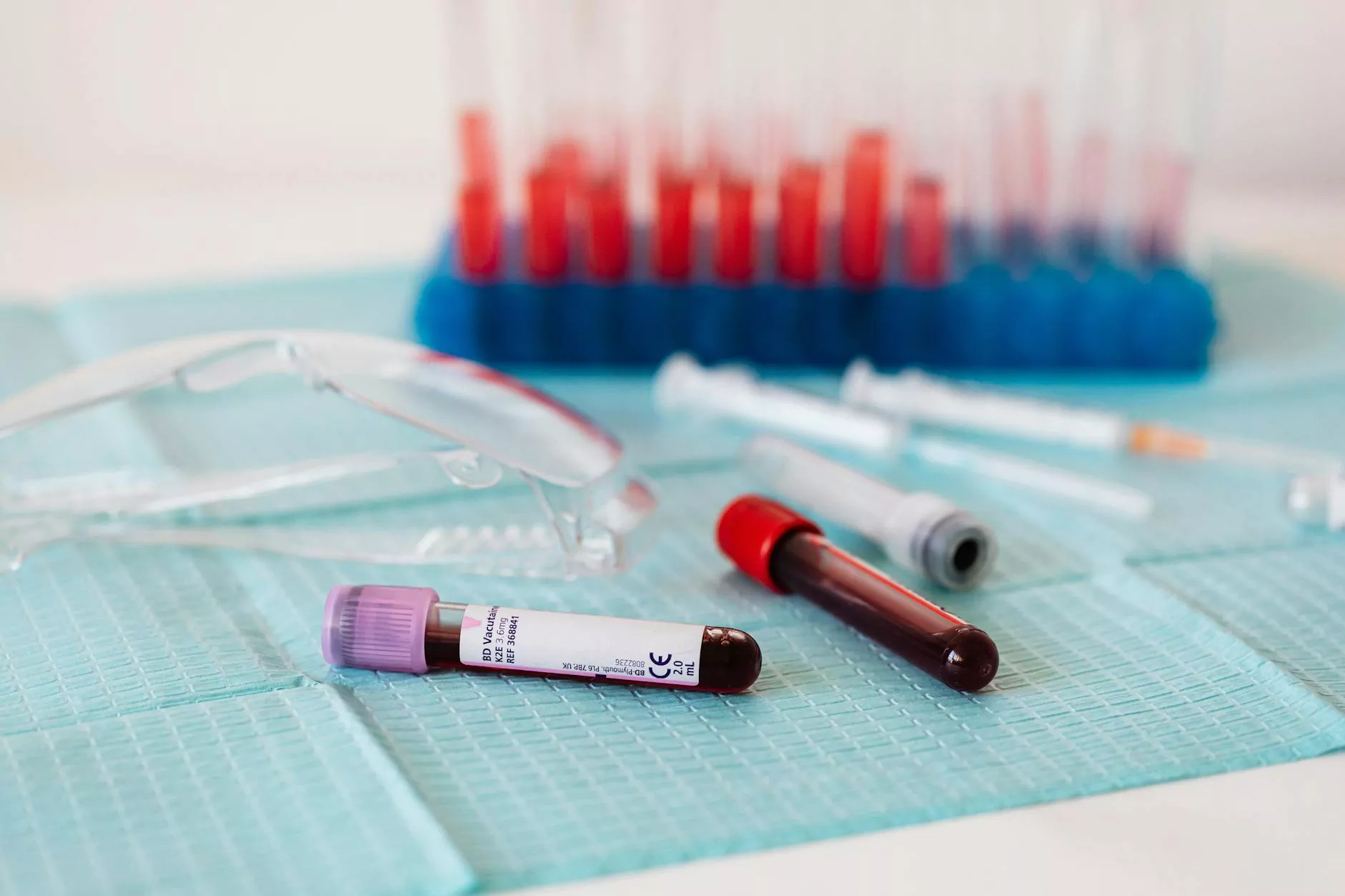Understanding Blood Clots in the Upper Leg

Blood clots can pose serious health risks, particularly when they occur in significant areas such as the upper leg. Understanding the causes, symptoms, prevention, and treatment options for blood clots in the upper leg is crucial for effective management and recovery. This article delves deep into the anatomy of blood clots and provides essential information that can help individuals recognize the signs and seek timely care.
What is a Blood Clot?
A blood clot is a mass of blood that has transformed from a liquid to a solid state. They are a natural part of the body's healing process, helping to stop bleeding when injuries occur. However, clots can also form without any injury and become a serious health concern.
When a clot forms in a deep vein, it is referred to as deep vein thrombosis (DVT), which commonly occurs in the legs. If these clots travel to the lungs, they can cause a pulmonary embolism, leading to severe complications or even death.
Causes of Blood Clots in the Upper Leg
The formation of blood clots in the upper leg may be attributed to several factors, which include:
- Immobility: Long periods of inactivity, such as long flights or bed rest during illness, can slow blood flow and cause clots.
- Injury: Trauma to the leg's blood vessels can trigger clot formation.
- Hormonal Changes: Certain hormonal therapies or pregnancy can increase clotting risks.
- Medical Conditions: Conditions such as cancer, heart disease, and inherited blood disorders can predispose individuals to clot formation.
- Obesity: Excess weight can put additional pressure on the veins.
- Smoking: Tobacco use affects blood flow and may increase clotting risks.
Symptoms of Blood Clots in the Upper Leg
Recognizing the symptoms of a blood clot in the upper leg is vital for early diagnosis and treatment. Common symptoms include:
- Swelling: Noticeable swelling in one leg compared to the other.
- Pain: Pain in the leg that may feel like cramping or soreness.
- Warmth: The affected area may feel warmer than the surrounding skin.
- Color Changes: The skin over the clot may appear red or discolored.
If you experience any combination of these symptoms, especially following extended periods of immobility, it is essential to seek medical attention immediately.
Complications of Blood Clots
While some blood clots may dissolve on their own without causing any harm, others can lead to severe complications, including:
- Pulmonary Embolism: If a clot dislodges and travels to the lungs, it can block blood flow and become life-threatening.
- Post-Thrombotic Syndrome: This condition can occur after a clot, leading to persistent pain and swelling.
- Chronic Venous Insufficiency: Damage to the veins can affect blood flow long-term, leading to swelling and discomfort.
Prevention of Blood Clots in the Upper Leg
Preventing blood clots is crucial, especially for individuals at higher risk. Here are some effective strategies:
- Stay Active: Regular physical activity promotes healthy blood circulation.
- Engage in Leg Exercises: Simple leg movements during long periods of sitting can enhance blood flow.
- Maintain a Healthy Weight: Losing weight can reduce the burden on your veins.
- Stay Hydrated: Proper hydration can thin the blood, reducing clot risk.
- Avoid Smoking: Quitting smoking improves circulation and reduces clotting risk.
- Wear Compression Stockings: These can help prevent clots by applying gentle pressure to your legs.
Diagnosis of Blood Clots
If a healthcare provider suspects a blood clot in the upper leg, several diagnostic tools may be employed, including:
- Ultrasound: A non-invasive test that uses sound waves to create images of blood flow in the veins.
- D-dimer Test: Measures the level of D-dimer in the blood, which can indicate clot presence.
- CT or MRI Scans: Advanced imaging that provides detailed views of blood vessels.
Treatment Options for Blood Clots
Timely treatment of blood clots is essential to prevent complications. Options include:
- Anticoagulants: Medications that help thin the blood and prevent further clotting.
- Thrombolytics: Drugs that dissolve existing clots quickly in emergency situations.
- Compression Therapy: Use of compression stockings can assist in blood flow recovery.
- Surgery: In severe cases, surgical interventions may be necessary to remove a clot.
Living with a History of Blood Clots
Individuals who have experienced blood clots need to adopt lifestyle changes and preventive measures to minimize future risks. This includes regular follow-ups with healthcare providers, adhering to prescribed medications, and making beneficial lifestyle adjustments.
Education on the signs and symptoms of potential clots is crucial for early detection and intervention. Learning to recognize changes in your body can be life-saving.
Conclusion
Understanding and managing the risk of blood clots in the upper leg is vital for maintaining good health. With proactive measures, awareness of symptoms, and appropriate medical care, individuals can protect themselves from the serious complications associated with blood clots.
No one should navigate the risks of blood clots alone. If you have concerns about your risk or symptoms related to blood clots, consult with a healthcare professional like those at Truffle Vein Specialists for expert advice and treatment options tailored to your needs.
blood clot in upper leg








